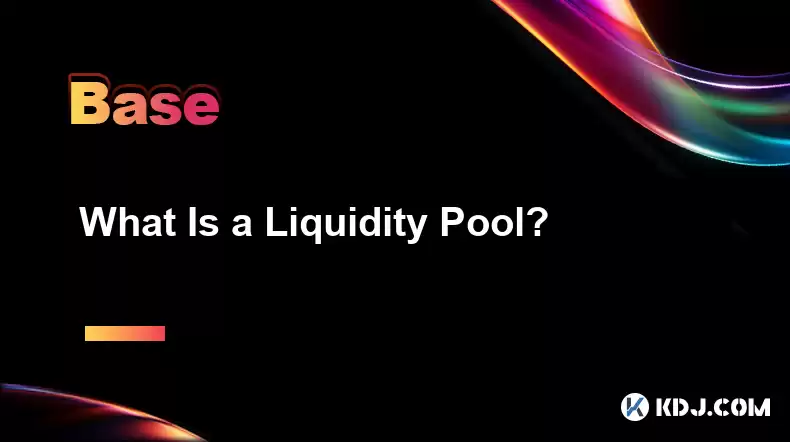-
 Bitcoin
Bitcoin $115200
-2.68% -
 Ethereum
Ethereum $3601
-5.16% -
 XRP
XRP $3.035
-2.96% -
 Tether USDt
Tether USDt $0.9997
-0.04% -
 BNB
BNB $764.5
-5.43% -
 Solana
Solana $168.1
-5.92% -
 USDC
USDC $0.9998
-0.02% -
 Dogecoin
Dogecoin $0.2090
-4.80% -
 TRON
TRON $0.3272
-0.49% -
 Cardano
Cardano $0.7306
-5.00% -
 Hyperliquid
Hyperliquid $39.16
-12.22% -
 Stellar
Stellar $0.3967
-4.96% -
 Sui
Sui $3.566
-5.95% -
 Chainlink
Chainlink $16.55
-6.57% -
 Bitcoin Cash
Bitcoin Cash $552.3
-3.90% -
 Hedera
Hedera $0.2516
-4.69% -
 Avalanche
Avalanche $21.99
-5.75% -
 Toncoin
Toncoin $3.621
-0.28% -
 Ethena USDe
Ethena USDe $1.000
-0.03% -
 UNUS SED LEO
UNUS SED LEO $8.951
0.02% -
 Litecoin
Litecoin $105.9
-3.59% -
 Shiba Inu
Shiba Inu $0.00001232
-5.00% -
 Polkadot
Polkadot $3.640
-5.55% -
 Uniswap
Uniswap $9.048
-7.03% -
 Monero
Monero $301.8
-1.51% -
 Dai
Dai $0.9999
-0.01% -
 Bitget Token
Bitget Token $4.334
-3.66% -
 Pepe
Pepe $0.00001064
-6.17% -
 Cronos
Cronos $0.1367
-5.78% -
 Aave
Aave $259.2
-4.59%
What Is a Liquidity Pool?
Liquidity pools distribute rewards to liquidity providers, who contribute asset pairs to ensure seamless trading and receive trading fees and additional incentives in return for their contributions, promoting decentralized asset trading.
Dec 17, 2024 at 11:17 pm

Key Concepts of Liquidity Pools:
- Liquidity pools provide decentralized liquidity for asset trading.
- They distribute rewards to liquidity providers based on their contributions.
- Automated market makers (AMMs) utilize liquidity pools to facilitate fair asset pricing.
- Uniswap, PancakeSwap, and SushiSwap are prominent decentralized exchanges (DEXs) that run on liquidity pools.
In-Depth Exploration: How Liquidity Pools Function
1. Decentralized Asset Trading:
- Unlike centralized exchanges, liquidity pools are not controlled by a single entity.
- Instead, they are distributed across a network of computers, allowing anyone to become a participant.
- Users can trade assets without the need for intermediaries, fostering increased transparency and autonomy.
2. Liquidity Provision and Rewards:
- Liquidity providers (LPs) contribute asset pairs to the pool, creating the necessary liquidity for trading.
- In return for their contribution, LPs receive trading fees and rewards that incentivize maintaining liquidity.
- Rewards typically consist of a share of the transaction fees incurred when assets are traded using the pool.
3. Automated Market Making (AMMs):
- AMMs facilitate the pricing of assets within liquidity pools without relying on order books.
- They use mathematical formulas called constant product market makers (CPMMs) to determine asset prices based on their relative proportions within the pool.
- This eliminates the need for traditional market makers and promotes fair and transparent pricing.
4. Prominent Liquidity Pool DEXs:
- Uniswap: A pioneering AMM-based DEX known for its simple user interface and extensive asset selection.
- PancakeSwap: A popular DEX on the Binance Smart Chain, offering faster transaction speeds and lower fees than Uniswap.
- SushiSwap: An alternative AMM-based DEX that offers advanced features such as yield farming and alternative pricing models.
5. Benefits and Considerations:
- Decentralization: Liquidity pools and AMMs promote a more democratic and inclusive trading environment.
- High Yield Potential: LPs can earn substantial returns through trading fees and governance rewards.
- Enhanced Liquidity: Liquidity pools aggregate liquidity from multiple sources, providing greater access to assets for traders.
- Risks: Impermanent loss can occur when the value of assets in the pool changes significantly, potentially eroding LP profits.
FAQs:
1. What factors influence liquidity pool performance?
- Token demand and trading volume
- Depth of the liquidity pool
- Volatility of the underlying assets
- Effectiveness of the AMM algorithm
2. How can I become a liquidity provider?
- Connect your wallet to a DEX that offers liquidity pools
- Select the desired asset pair and determine the amount you want to contribute
- Add your assets to the pool and receive corresponding LP tokens
3. What are the alternatives to liquidity pools?
- Traditional centralized exchanges
- Order books on decentralized exchanges
- Peer-to-peer trading platforms
Disclaimer:info@kdj.com
The information provided is not trading advice. kdj.com does not assume any responsibility for any investments made based on the information provided in this article. Cryptocurrencies are highly volatile and it is highly recommended that you invest with caution after thorough research!
If you believe that the content used on this website infringes your copyright, please contact us immediately (info@kdj.com) and we will delete it promptly.
- Navigating the Crypto Market: Bitcoin, Trader Experience, and Avoiding the Noise
- 2025-08-02 00:50:12
- Deep Agents, AI Task Management, and Evolution AI: A New Era?
- 2025-08-02 00:50:12
- SPX6900, BlockDAG, and Miner Sales: A New York Minute on Crypto Trends
- 2025-08-01 23:30:15
- BlackRock, XRP ETF, and Ripple: Is the Perfect Storm Brewing?
- 2025-08-01 22:50:11
- Solana ETF Momentum Builds: Will SOL Join the Institutional Party?
- 2025-08-02 00:10:15
- Cardano (ADA) Breakout Watch: Is the Sleeper About to Wake Up?
- 2025-08-02 00:10:16
Related knowledge

What is the difference between CeFi and DeFi?
Jul 22,2025 at 12:28am
Understanding CeFi and DeFiIn the world of cryptocurrency, CeFi (Centralized Finance) and DeFi (Decentralized Finance) represent two distinct financia...

How to qualify for potential crypto airdrops?
Jul 23,2025 at 06:49am
Understanding What Crypto Airdrops AreCrypto airdrops refer to the distribution of free tokens or coins to a large number of wallet addresses, often u...

What is a crypto "airdrop farmer"?
Jul 24,2025 at 10:22pm
Understanding the Role of a Crypto 'Airdrop Farmer'A crypto 'airdrop farmer' refers to an individual who actively participates in cryptocurrency airdr...

What is the difference between a sidechain and a Layer 2?
Jul 20,2025 at 11:35pm
Understanding the Concept of SidechainsA sidechain is a separate blockchain that runs parallel to the main blockchain, typically the mainnet of a cryp...

What is the Inter-Blockchain Communication Protocol (IBC)?
Jul 19,2025 at 10:43am
Understanding the Inter-Blockchain Communication Protocol (IBC)The Inter-Blockchain Communication Protocol (IBC) is a cross-chain communication protoc...

How does sharding improve scalability?
Jul 20,2025 at 01:21am
Understanding Sharding in BlockchainSharding is a database partitioning technique that is increasingly being adopted in blockchain technology to enhan...

What is the difference between CeFi and DeFi?
Jul 22,2025 at 12:28am
Understanding CeFi and DeFiIn the world of cryptocurrency, CeFi (Centralized Finance) and DeFi (Decentralized Finance) represent two distinct financia...

How to qualify for potential crypto airdrops?
Jul 23,2025 at 06:49am
Understanding What Crypto Airdrops AreCrypto airdrops refer to the distribution of free tokens or coins to a large number of wallet addresses, often u...

What is a crypto "airdrop farmer"?
Jul 24,2025 at 10:22pm
Understanding the Role of a Crypto 'Airdrop Farmer'A crypto 'airdrop farmer' refers to an individual who actively participates in cryptocurrency airdr...

What is the difference between a sidechain and a Layer 2?
Jul 20,2025 at 11:35pm
Understanding the Concept of SidechainsA sidechain is a separate blockchain that runs parallel to the main blockchain, typically the mainnet of a cryp...

What is the Inter-Blockchain Communication Protocol (IBC)?
Jul 19,2025 at 10:43am
Understanding the Inter-Blockchain Communication Protocol (IBC)The Inter-Blockchain Communication Protocol (IBC) is a cross-chain communication protoc...

How does sharding improve scalability?
Jul 20,2025 at 01:21am
Understanding Sharding in BlockchainSharding is a database partitioning technique that is increasingly being adopted in blockchain technology to enhan...
See all articles

























































































